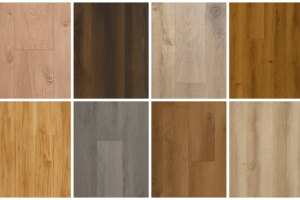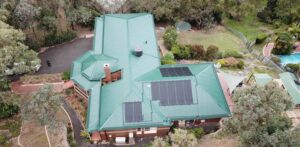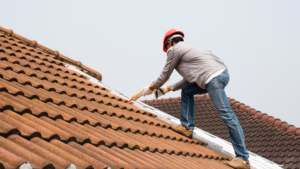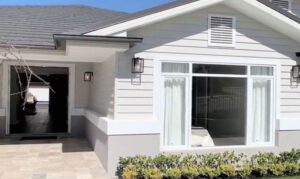
Painting weatherboards may seem straightforward, but professionals know that achieving a flawless, long-lasting finish requires skill, preparation, and the right techniques. Understanding how to paint weatherboards properly ensures your exterior looks polished, protects the timber, and withstands weather conditions.
This blog outlines the step-by-step process professionals follow to paint weatherboards efficiently and effectively.
How Do Professionals Paint Weatherboards?
Here are the nine steps that professionals follow to paint weatherboards to ensure a durable, long-lasting, and visually flawless finish:
Step 1: Assess the Condition of the Weatherboards
Professional painters begin by inspecting the weatherboards for damage. They look for rot, cracks, warping, or loose boards. Any compromised timber is replaced or repaired before painting. This step ensures the surface is sound and prevents premature paint failure.
Step 2: Clean the Weatherboards
Effective painting begins with a meticulously clean surface. Professionals remove dirt, mould, mildew, and loose paint using soft brushes, mild detergents, or low-pressure washing. This cleaning step eliminates contaminants that could interfere with paint adhesion and ensures a smooth, even finish.
Step 3: Prepare the Surface
Preparation is essential for a lasting finish. Professionals sand rough patches and remove old, peeling paint to create a smooth surface. Gaps, nail holes, and cracks are filled with high-quality exterior filler and then sanded again for uniformity.
This process directly addresses the common question of how do you prepare weatherboards for painting. Proper preparation ensures maximum paint adhesion and long-lasting results.
Step 4: Protect Adjacent Areas
Professional painters protect areas not being painted using drop sheets, painter’s tape, and plastic coverings. Windows, doors, fixtures, and landscaping are shielded from accidental splashes. This step ensures a clean, professional result and avoids unnecessary cleanup.
Step 5: Apply a Primer
Priming weatherboards is essential for a long-lasting finish. Professionals use a high-quality exterior timber primer to seal the wood and improve paint adhesion. Primer also helps cover old colours or stains, providing a consistent base for topcoats.
Step 6: Select High-Quality Paint
Professionals typically use exterior-grade acrylic or oil-based paints designed to paint a weatherboard house. Acrylic paints are preferred for their flexibility, UV resistance, and durability. The choice of finish, matte, satin, or gloss, depends on the preferred aesthetic and maintenance considerations. Gloss finishes are easier to clean, while satin or matte finishes offer a refined appearance.
Step 7: Apply the Paint in Thin Coats
Professional painters apply multiple thin coats rather than one thick coat. Thin coats dry evenly, prevent drips, and reduce cracking. Brushes are used for edges, corners, and detailing, while rollers cover larger areas efficiently. Typically, two coats are applied with adequate drying time between each.
Step 8: Inspect and Touch Up
After the final coat, professionals inspect the weatherboards for any inconsistencies or missed spots. Touch-ups are applied carefully to achieve a uniform, flawless finish. This attention to detail ensures a professional-quality result that will last for years.
Step 9: Clean Up and Maintenance Recommendations
After painting is finished, all tools are thoroughly cleaned, and protective coverings are removed. Professionals also offer guidance on maintaining painted weatherboards. Regular inspections, gentle cleaning, and promptly addressing any peeling or cracking help prolong the paint’s durability and maintain the timber’s quality.
Why It Is Important to Choose a Professional to Paint Weatherboards
Choosing a professional painter for weatherboards offers several benefits:
- Expert Assessment: Professionals can identify damaged or weak timber and determine the best preparation methods.
- Proper Preparation: They ensure surfaces are cleaned, sanded, and primed correctly for long-lasting paint adhesion.
- High-Quality Materials: Professionals use primers and paints specifically designed for exterior timber, providing better durability and protection against the elements.
- Safety Measures: Experienced painters follow safety protocols for working at heights and protecting surrounding areas.
- Flawless Finish: Professionals deliver an even, smooth finish with no drips, streaks, or uneven coverage.
- Cost and Time Efficiency: Proper application reduces the risk of premature wear, saving money on repairs and repainting in the long run.
- Structural Protection: Correct painting techniques help preserve the integrity of your weatherboards, protecting them from moisture, rot, and UV damage.
How Often Do Weatherboards Need to Be Painted?
Weatherboards generally need repainting every 5 to 7 years to maintain their appearance and protect the timber. Factors such as sunlight exposure, rainfall, and the quality of the previous paint can affect this timeline. Regular inspections help identify peeling, cracking, or fading early, allowing timely maintenance and ensuring the weatherboard house remains well-protected and visually appealing.
Maintaining Painted Weatherboards for Longevity
After painting, proper maintenance is essential to extend the durability of your weatherboards. Professionals recommend washing the exterior at least once a year to remove dust, dirt, and mould. Inspecting the paint for early signs of cracking or peeling allows you to address minor issues before they become major problems. Trimming nearby trees and ensuring gutters are clear prevents moisture from accumulating on the timber. Following these maintenance steps helps your house stay visually appealing and structurally sound for years.
Take Away
Painting weatherboardscorrectly is essential for protecting timber, preventing moisture damage, and maintaining your home’s appearance. Professionals follow a step-by-step process, including inspecting for damage, thorough cleaning, sanding and filling imperfections, priming, and applying multiple even coats of high-quality paint. Regular maintenance and timely repainting, typically every 5–10 years depending on exposure, ensure a durable finish.
Hiring a professional ensures the job is done efficiently, with expert techniques that provide long-lasting results and a flawless appearance.
Contact an experienced Melbourne painter and schedule an appointment today.




